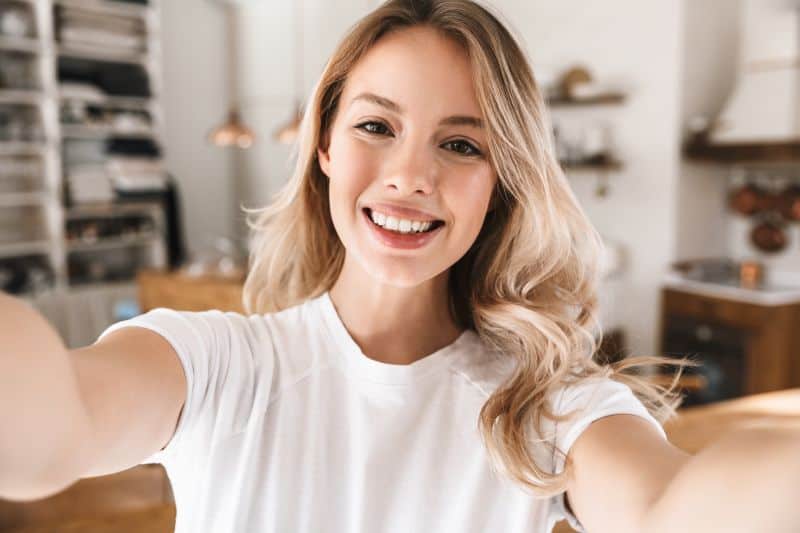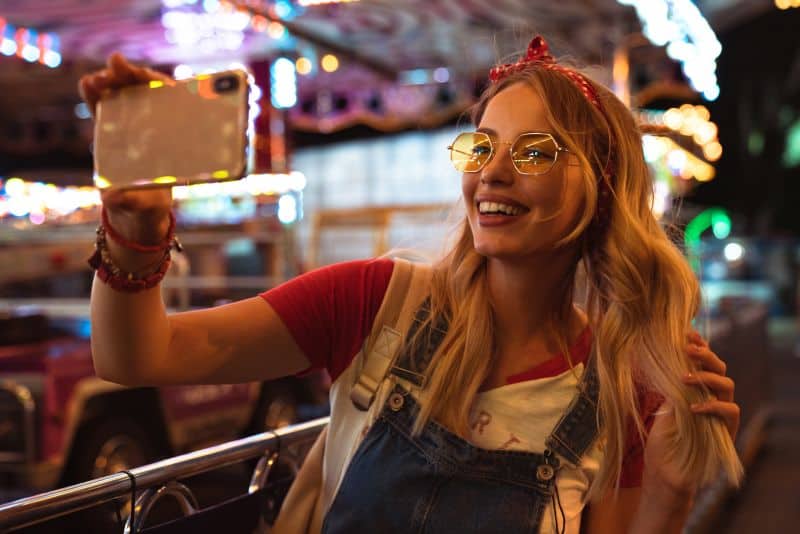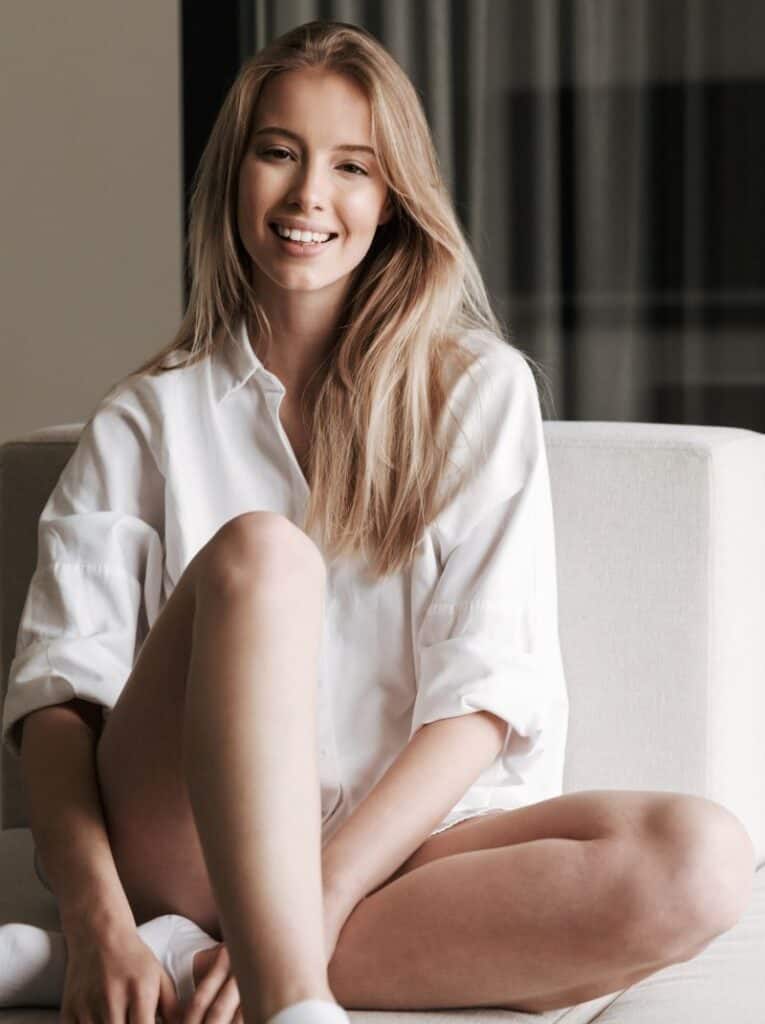Last Updated on December 30, 2022 by Gaga
What is Hair Texture?
The term “texture” is used to describe the thickness of individual hair strands. The hair can have a fine, medium, or thick texture.
The term “texturizer” can have different meanings: In chemical services, a hair texturizer refers to a chemical product designed to slightly relax tightly coiled curls, giving them more of a wave pattern.
In this post, the term “texturizer” refers to styling products that are meant to add volume and lift to fine and flat hair and enhance its manageability.

Seven Reasons to Use Hair Texturizers
There are many good reasons to include hair texturizers in your hair care routine, and some of them are listed below:
- Lift your roots: If you have thick, sleek hair that sits flat on your head, you want to use a texturizer to define your layers and give some oomph to your locks.
- Boost volume: If you have fine, straight hair that feels boring and limp, you need a texturizer to keep your strands from falling flat. A texturizing product will help reinforce some volume and give your hair a fuller look.
- Give grip and hold: If your hair is hard to style, you need a texturizer to give it some grip and cut down your styling time. Hair texturizers also help hold a style in place throughout the day.
- Enhance highlights: If you have highlighted, short hair, you may want a texturizer to make your highlights stand out more.
- Tame flyaway hair: You may need a texturizer to tame frizz and flyaways without leaving the hair feeling greasy or sticky.
- Crete beachy look: If you are trying to achieve beachy hairstyles, texturizing products can give you that sexy, tousled look within a matter of minutes.
- Help retain curls: When applied to the hair before heat styling, a hair texturizer helps keep your style longer. If you have trouble curling your straight hair, using texturizing products helps your curls stay longer and give them a more defined look.
Hair Texturizing Styling Products
Texturizing styling products are gaining in popularity because unlike most ordinary hairsprays, they give a brushable hold.
1. Texturizing Paste
Texturizing paste works great for short hair. It separates hair into random pieces to achieve a stunning, messy look. It provides a flexible texture and makes fine hair appear thicker. This product is also suitable for either women’s or men’s hairstyles.
For best results, use a texturizing paste after blow-drying to separate hair and give it more definition. Rub a small amount between your hands and run it through the layers of hair. Use your fingertips to pull the pieces of hair in different directions, achieving the look you want.
If you have very fine or thin hair, use it before blow-drying to add more volume.
Related products: TIGI Bed Head Manipulator Texture Paste, AQUAGE Transforming Paste, Kevin Murphy Night Rider, Sun Bum Sonny’s Original Surf Paste, and AG Hair Natural Dry Lift Texture And Volume Paste.

2. Texturizing Mist
If you have fine hair, this lightweight product will give your hair a nice texture and soft fullness without leaving it heavy.
For best results, use this product on towel-dried hair, before blow-drying. It will make your hair easy to style and keep the humidity at bay. When used before curling iron, it helps create well-defined bouncy curls.
Re-apply texturizing mist to dry hair to redefine texture and refresh your style.
Related products: Kenra Platinum Texturizing Mist, Brocato Back to the Beach Texturizing Mist, Design.ME Puff.ME LIGHT Volumizing Mist Powder, and Uplift Volumizing Mist by Volaire.
3. Dry Texturizing Spray
Dry texturizing spray partially works as a dry shampoo, keeping hair looking fresh between washes. It absorbs oil at the roots, giving volume and “oomph” to flat hair. This product offers a bit more hold than dry shampoo. It also gives hair a flexible grip, allowing for easy styling and restyling.
A dry texturizing spray works best on straight hair that needs some texture and messiness. This is the right product if you need something to refresh dirty or limp hair and add some volume.
To boost volume, flip your hair upside down and spray. To lift the roots, spray the product on the root area, and massage it in a circular motion. Use a comb to lightly tease your tresses for more volume. Spray on dry hair, after styling, to hold the style and prevent hair from getting oily. Use before curling to get longer-lasting curls.
Related products: Oribe Dry Texturizing Spray, MOROCCANOIL Dry Texture Spray, and MONAT Studio One Dry Texturizing Spray.

4. Dry Shampoos
Dry shampoo absorbs excess oils and keeps your locks looking fresh between washes. It also gives texture and revives limp hair, giving it body and bounce.
To refresh oily hair, spray the roots with quick, short sprays while holding sections of your hair upright. Hold the spray about 10 inches away from your scalp.
To create more texture and body, flip your head upside down and blast the dry shampoo throughout your hair.
Also, use a dry shampoo to create a gritty body and texture before styling an updo, bun, or braid.
Related products: Aveda New Shampure Dry Shampoo, Bumble, and Bumble Pret A Powder Shampoo, All Natural, Vegan Dry Shampoo Powder by Handmade Heroes, R+Co Skyline Dry Shampoo Powder, and Oscar Blandi Pronto Dry Shampoo.

5. Sea Salt Sprays
Sea salt hairsprays add volume and give a messy, tousled texture to your hair. They offer the quickest way to achieve beachy hairstyles without swimming in the ocean.
Salt sprays work best for people with naturally wavy hair.
If you have thick straight hair, sea salt spray helps achieve a more texturized look with some natural messiness.
If you have short hair, you can use sea salt spray to get a messier texture and more volume.
If your hair doesn’t hold the curl, apply sea spray before using a curling iron to achieve more natural and longer-lasting curls.
To get a beachy texture, apply sea salt spray to towel-dried hair, tousle, and let your locks air dry.
To enhance waves, apply sea salt spray generously onto damp hair and tousle with your fingers.
To boost volume, apply sea salt spray liberally to damp hair before blow-drying. To achieve a wavy, messy look, use the diffuser and run it through your hair in a gentle, circular motion.
Reapply sea salt spray to dry hair to redefine texture and bring your waves back to life.
The main downside of salt sprays is that they tend to strip moisture from your hair because salt attracts water molecules. Certain brands of sea salt sprays contain special ingredients in their formula to help balance moisture.
Related products: KICK Sea Salt Spray for Hair, Davines Sea Salt Spray, Not Your Mother’s Beach Babe Sea Salt Spray, Sun Bum Sea Spray, and Bumble & Bumble Surf Spray.

6. Sugar Sprays
If you have dry or keratin-treated hair, you might want to skip salt sprays and check out a sugar spray. Unlike sea salt, sugar cane extract has a conditioning effect and will not dry out your hair. A texturizing spray with sugar cane extract gives your hair body, texture, and hold without the unwanted drying effect.
Apply a sugar spray to damp hair, before blow-drying, to create volume and texture. Use this product on dry hair, after styling, to lock your style in place. To get messy waves, spray sugar spray onto your hair, skipping the roots, then scrunching your hair with your hands.
Related products: Wella EIMI Sugar Lift Sugar Spray, Shea Moisture Sugarcane Extract and Meadowfoam Seed Silicone Free Miracle Styler, SUNCOAT PRODUCTS Sugar-Based Natural Hair Styling Spray, and Paul Mitchell Neon Sugar Spray Texturizer.

Gaga is a blogger and founder of the Softer Hair website. She often says that insomnia is to blame for her first blogging attempts. Being the night owl, she hated the morning alarm. She left her office job and returned to what she loved most - writing.

